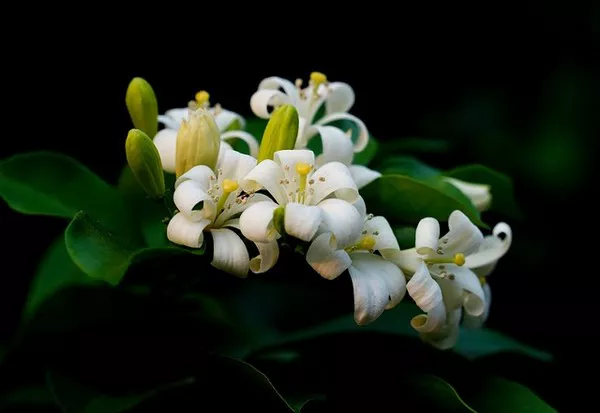Flowers are among the most enchanting and diverse creations of the natural world, captivating us with their vibrant colors, enticing fragrances, and unique forms. While their aesthetic appeal is undeniable, flowers play a pivotal role in the reproduction of many plant species. The process by which flowers reproduce is a fascinating and intricate one, involving a myriad of mechanisms and interactions. In this article, we will delve into the captivating world of flower reproduction, exploring the various methods, strategies, and adaptations that enable these botanical wonders to perpetuate their species.
The Anatomy of a Flower
To understand how flowers reproduce, we must first explore their anatomy. Flowers are reproductive structures of angiosperms, the largest group of plants on Earth. Each flower consists of several essential parts, each with a specific function in the reproductive process:
Sepals: These are the outermost, usually green, leaf-like structures that protect the developing flower bud.
Petals: Petals are the colorful, often fragrant, structures that serve to attract pollinators such as bees, butterflies, and birds. They play a crucial role in the pollination process.
Stamens: Stamens are the male reproductive organs of the flower. Each stamen comprises an anther, where pollen is produced, and a filament that supports the anther.
Pistil (or Carpel): The pistil is the female reproductive organ of the flower, consisting of three main parts: the stigma (which receives pollen), the style (a slender tube connecting the stigma to the ovary), and the ovary (which contains the ovules).
Now that we have a basic understanding of flower anatomy, let’s explore the two primary methods of flower reproduction: sexual reproduction and asexual reproduction.
Sexual Reproduction in Flowers
Sexual reproduction in flowers is the most common and well-known method of plant propagation. It involves the fusion of male and female reproductive cells, leading to the creation of a new genetically unique plant. The key steps in sexual reproduction are pollination, fertilization, and seed development.
1. Pollination: This is the process by which pollen, produced by the anthers of a flower, is transferred to the stigma of the same flower (self-pollination) or to the stigma of another flower (cross-pollination). Pollinators, such as bees, butterflies, and birds, play a vital role in this process by carrying pollen from one flower to another as they forage for nectar.
2. Fertilization: After successful pollination, the pollen grain germinates on the stigma, producing a pollen tube that grows down the style and into the ovary. The male gametes (sperm cells) within the pollen grain travel through the pollen tube to reach the ovule in the ovary. Once the sperm cells fertilize the egg cell within the ovule, a zygote is formed, which will develop into an embryo.
3. Seed Development: The fertilized ovule begins to develop into a seed, while the ovary transforms into a fruit, protecting the developing seeds. The seed contains the genetic information of both parent plants and is equipped with all the necessary nutrients for the future plant’s growth.
Asexual Reproduction in Flowers
While sexual reproduction is the primary method of flower reproduction, some plants have evolved mechanisms for asexual reproduction, which allows them to generate genetically identical offspring without the involvement of seeds or pollinators. Common forms of asexual reproduction in flowers include:
1. Vegetative Propagation: In this method, new plants are produced from vegetative parts of the parent plant, such as stems, leaves, or roots. Runners, rhizomes, and tubers are examples of specialized structures used in vegetative propagation. Plants like strawberries and potatoes employ this strategy.
2. Bulb Division: Many bulbous plants, like tulips and daffodils, reproduce asexually through bulb division. Over time, the parent bulb produces offsets, which can be separated and planted to grow into new identical plants.
3. Suckering: Some plants send out horizontal stems or roots, known as suckers, which can develop into new plants. Blackberries and raspberries are good examples of plants that spread through suckering.
4. Cuttings: Gardeners often use this method to propagate desirable plant varieties. A stem or leaf cutting is taken from the parent plant and encouraged to root in soil or water. Once roots develop, a new plant is established.
5. Tissue Culture: In a laboratory setting, plant tissue culture involves the cultivation of cells or tissues from a parent plant in a nutrient-rich medium. This method is particularly useful for mass-producing genetically identical plants.
Adaptations for Reproduction
Flowers have evolved an array of fascinating adaptations to increase their chances of successful reproduction. Some of these adaptations include:
1. Nectar and Color: Flowers often produce nectar as a reward for pollinators, attracting them with both color and scent. The bright colors and patterns of petals are specifically designed to appeal to various pollinators, which helps ensure efficient pollination.
2. Timing: Some flowers open and release pollen at specific times of the day or in response to environmental cues like temperature and light. This synchronization increases the likelihood of successful pollination.
3. Pollen Structure: The structure of pollen grains can vary significantly between plant species, influencing the type of pollinators they attract. For instance, some plants have sticky pollen that adheres to bees, while others have powdery pollen that easily attaches to butterflies.
4. Dioecy and Monoecy: Some plant species have separate male and female flowers (dioecy), while others have both male and female reproductive structures within the same flower (monoecy). These arrangements have evolved to minimize self-pollination and promote outcrossing.
Conclusion
Flower reproduction is a captivating and vital aspect of plant life, contributing to the biodiversity and abundance of the natural world. Through the intricate mechanisms of sexual and asexual reproduction, flowers have adapted and evolved to ensure their survival and the continuation of their species. As we admire the beauty of flowers in our gardens and landscapes, let us also marvel at the incredible science behind their reproduction, reminding us of the profound interconnectedness of all life on Earth.


